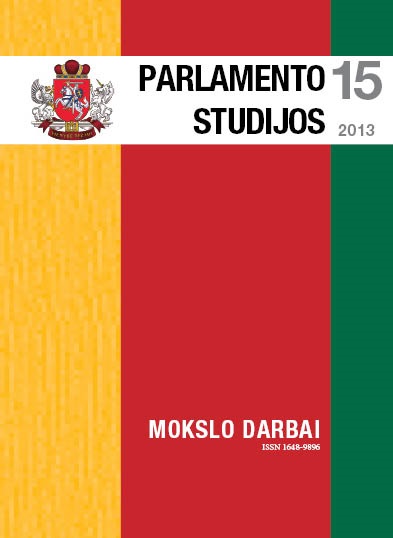Permąstant partinių sistemų įtaką rinkėjų elgsenos kaitumui: Lietuvos savivaldybių tarybų atvejis
DOI:
https://doi.org/10.51740/ps.vi15.237Reikšminiai žodžiai:
rinkėjų elgsenos kaitumas, partinė sistema, koaliciniai šablonai, Lietuvos savivaldybių tarybosSantrauka
Pastaraisiais dešimtmečiais rinkėjų elgsenos kaitumo tyrimai politikos moksluose tapo aktualia tema. Tačiau vieno įtakingiausių šio reiškinio aiškinimų, partinės sistemos, teorinis ir empirinis pagrindimas yra gana komplikuotas dėl dviejų priežasčių: Giovannio Sartorio partinių sistemų klasifikacijos tiesioginio transplantavimo ir nacionalinio lygmens imčių naudojimo. Šiame straipsnyje, derinant G. Sartorio ir Peterio Mairo teorijas, pasiūloma inovatyvi partinių sistemų (apibrėžiamų kaip ilgojo laikotarpio koalicinių šablonų) tipologija ir iš jos išvedamas rinkėjų elgsenos kaitumo aiškinimas. Teorija tikrinama remiantis empiriniu tyrimu ir naudojant 1995–2011 m. duomenis iš Lietuvos savivaldybių tarybų. Atrandama, kad kuo mažiau partinėse sistemose, kurias apibrėžia konkretus koalicinio partijų elgesio šablonas, yra paskatų stabiliau balsuoti už tam tikras partijų blokų alternatyvas, tuo didesnė jose aukšto rinkėjų elgsenos kaitumo tikimybė.








 Lietuvos nacionalinės Martyno Mažvydo bibliotekos mokslo žurnalų ir leidinių metaduomenys yra platinami pagal
Lietuvos nacionalinės Martyno Mažvydo bibliotekos mokslo žurnalų ir leidinių metaduomenys yra platinami pagal 